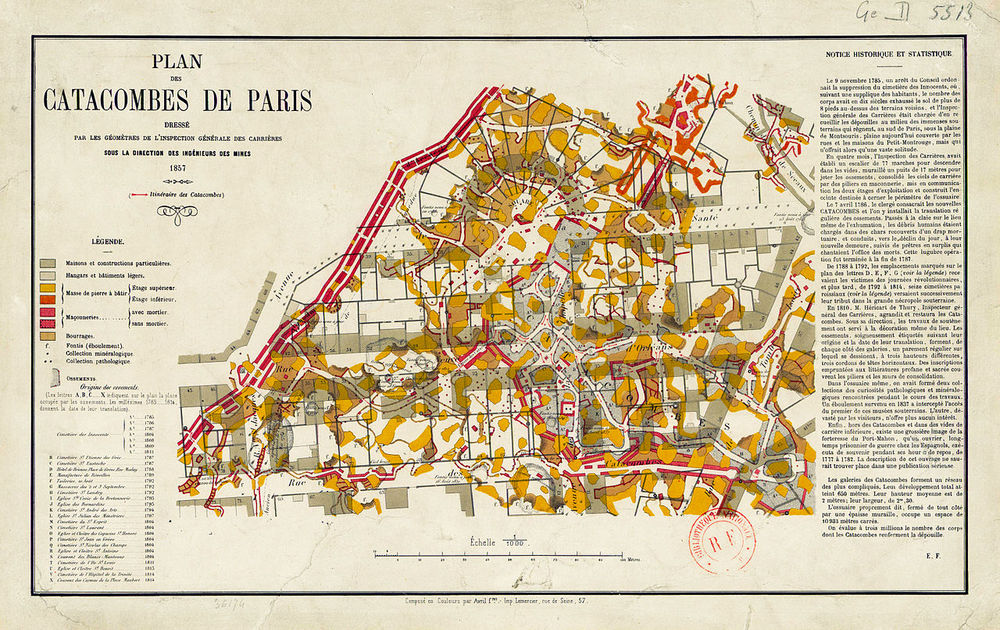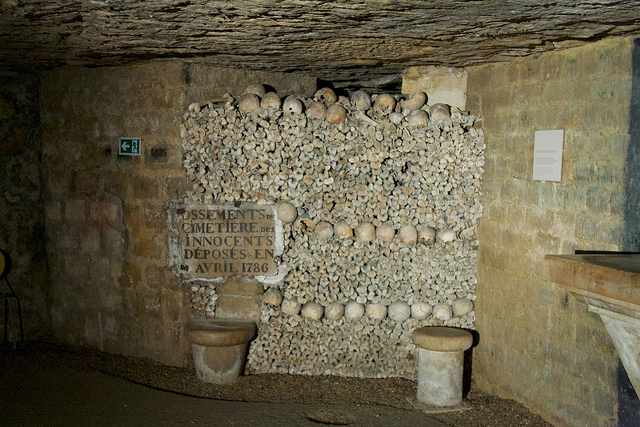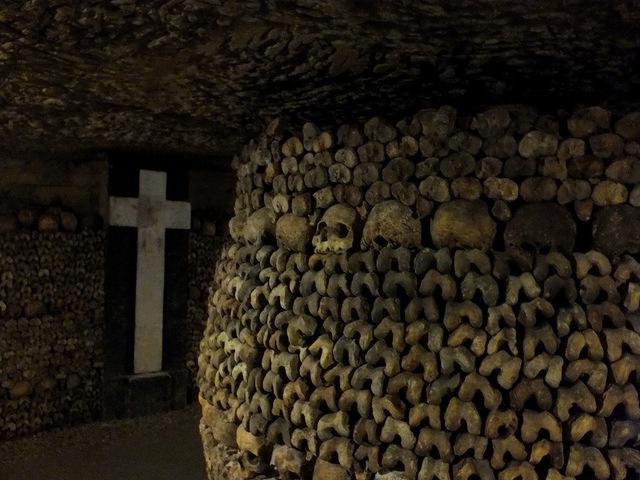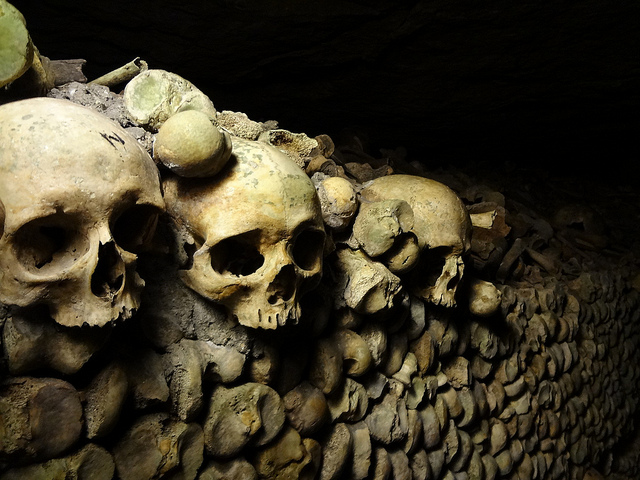Forensic Case Files: The Parisian Catacombs
/Paris is often called The City of Light. But deep under the city, another world exists, a world of darkness and death—the great Catacombs of Paris. Holding the remains of more than six million dead, over two hundred miles of underground tunnels stretch under the city in a labyrinthine sepulchre.
For over a millennium, Parisians buried their dead in cemeteries inside the city walls. But even by the twelfth century, the cemeteries were already overflowing with no room to expand. Parisians attempted to manage the issue by exhuming the oldest of the remains and burying them packed together in mass graves. This helped for a period of time, but, by the eighteenth century, things were getting desperate once again. Finally, after the weight of the mass grave caved the contents into an adjoining residential basement, a radical plan was concocted and acted upon.
Paris was built on top of a series of limestone mines, many which were excavated to supply the city with stone for its rapid expansion. Coincidentally, as the cemeteries were being closed, those same mine tunnels were being renovated to ensure the stability of the streets and buildings above. It was the perfect, if somewhat creepy, solution to dual problems: the mine shafts could hold the remains, while the bones of the dead could help support the great city where they’d once travelled above ground. A number of cemetery headstones and sculptures were also moved underground and slowly, the mausoleum was formed. It took over two years to move the dead of Paris underground, and an additional four years to arrange the bones into their current arrangements. The ossuary opened to the public in 1814.
A map showing the extensive catacomb plans:

Entry to the catacombs (translation: Stop! Here lies the Empire of Death):

Bone sculptures:





Cemetery sculptures and artefacts:



The first time I saw the cover for DEAD, WITHOUT A STONE TO TELL IT, I knew they’d used the Paris catacombs for some of their material. Needless to say, it’s hard to get photos of skeletal remains at actual crime scenes as they are evidence and must be protected. So the cover designers had to go to accessible photos to include real bones. Even knowing where the material came from, I still thought it worked beautifully.
The catacombs hold a more varied history than simply the home of the dead. During World War II it was home to the French resistance, who used the system of tunnels to traverse the city in secret. At the same time, a section below a high school in the sixth arrondisement was used as a German bunker. But the catacombs’ impact on the city is lasting—due to the presence of the tunnels under the city, tall structures cannot be supported in Paris. As such, tall, modern skyscrapers will never grace the cityscape and Paris will forever retain its historical appearance.
Photo credit: Cesar I. Martins, Wikimedia Commons, Shadowgate, Adam Baker, Julian Fong, Americano, Will White, Sharat Ganapati, Fraser Mummery, Tommie Hansen, and Randy Connolly.





 87.5%
87.5%